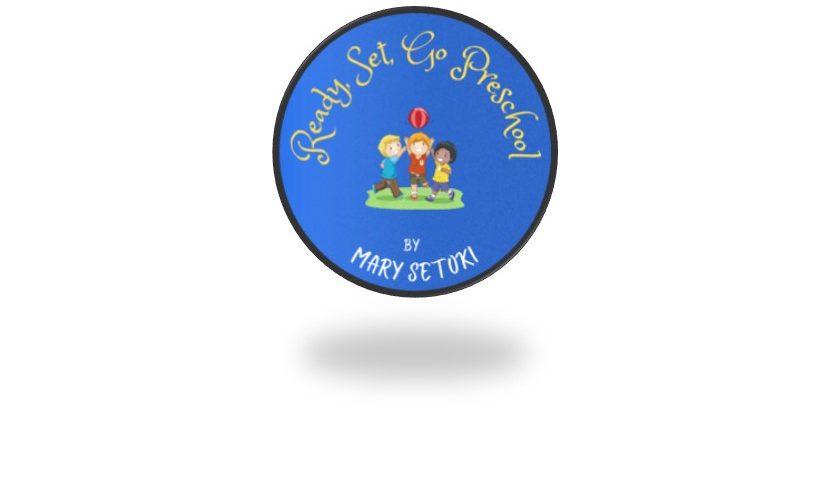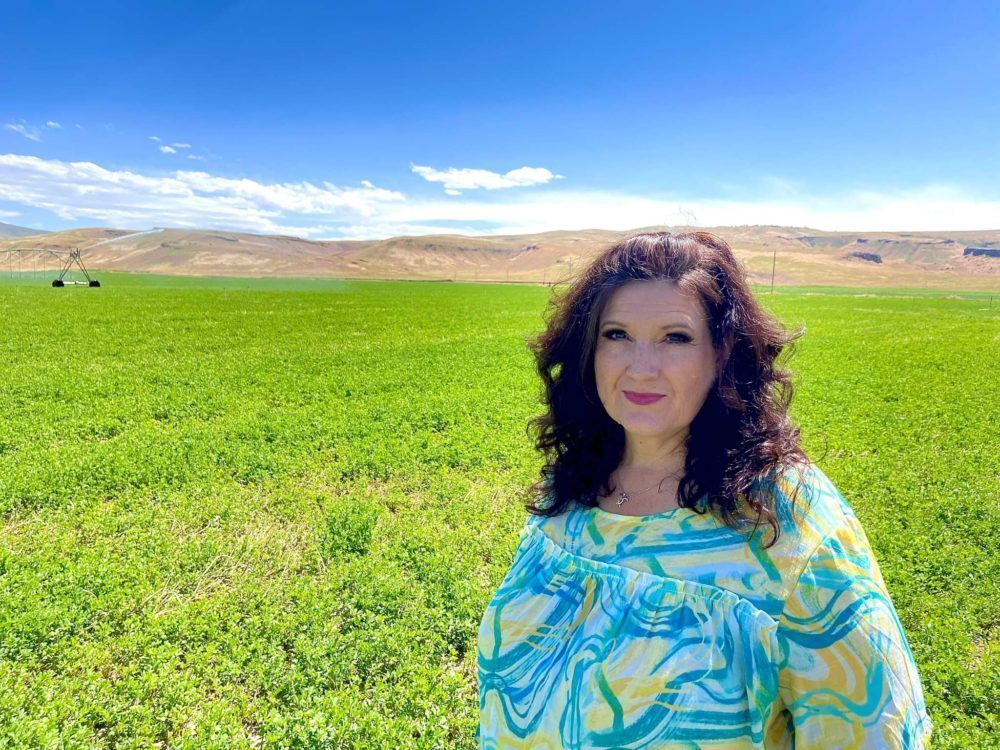Music and movement in preschool do not just happen during music teaching moments. Activities for music and movement take place at the beginning of the day to welcome students and at the end of the day to review the day’s activities and say goodbye. Preschool music and movement activities include counting songs that add or subtract with each verse, or songs that teach the letters and their sounds. Music and movement for preschool can teach music concepts such as steady beat or listening for how music makes you feel. Preschool music and movement lesson plans can be used to teach literacy and language, social-emotional skills, math skills as well as any other topic that you are teaching. Music and movement in Preschool are like having your own secret sauce that makes everything come together.
(I have an Amazon Affiliate link and receive a small commission if you purchase these items. It does not cost you any more to purchase through my link, than to purchase directly. I guarantee that I will not give a link to any product that I do not personally use, or that is on my wish list after doing my research on products for my own classroom. I will always tell you which products I have used, and which ones are on my wish list.)
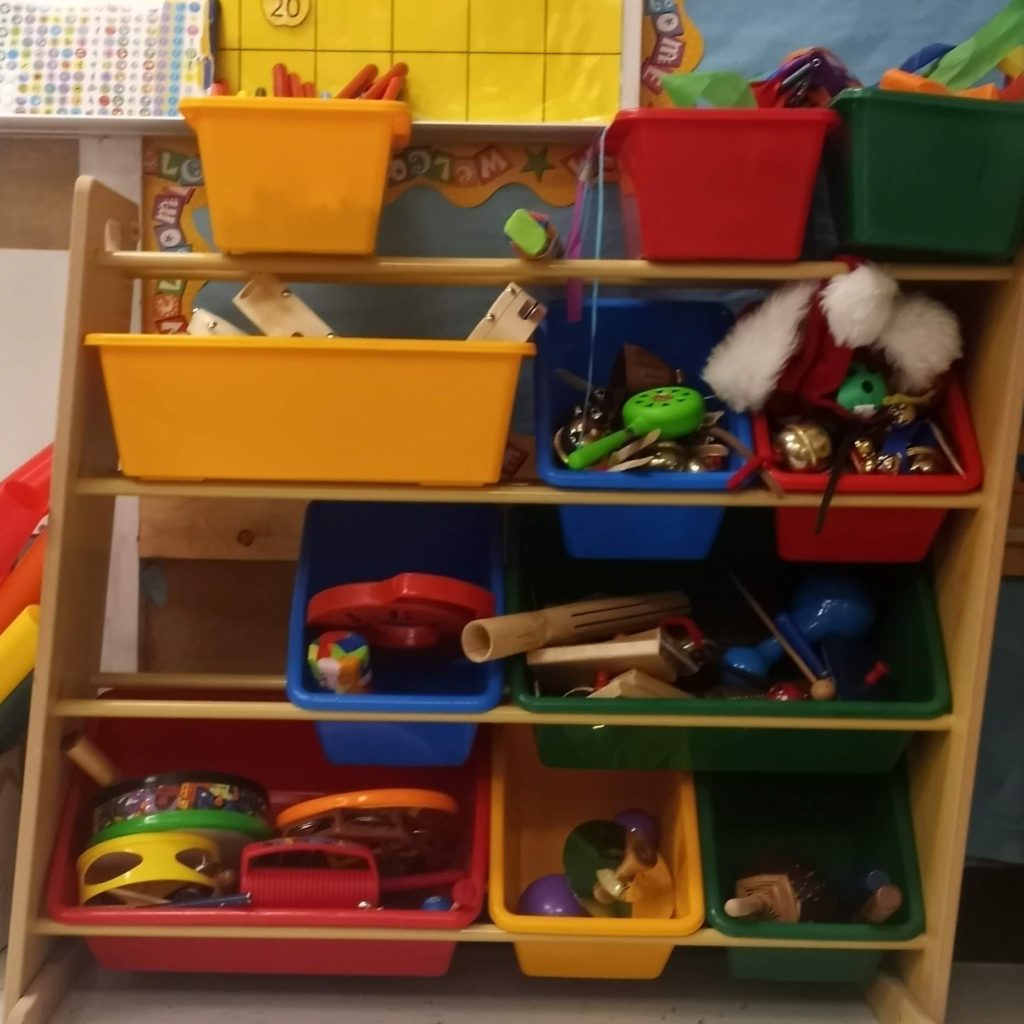
Activities for Music and Movement
In order to teach music activities in your classroom, you should have some understanding of the elements of music. For purposes of this blog, I am listing the following 10 elements: Beat, Rhythm, Pitch, Melody, Tempo, Dynamics, Timbre, Texture, Harmony and Form. When you have some understanding of these, you can turn just about any song into a music teaching moment.
Steady Beat
The steady beat of a song is like the heartbeat of that song. It can be fast, it can be slow or it can be anywhere in between, but it must be steady. You can turn just about any song into a music lesson just by clapping to the beat of the song. You could also use rhythm sticks or march to the beat.
Preschool music and movement activity No. 1
This is an all time favorite for my preschool classes as well as my younger elementary classes when I used to be the elementary music teacher. Clap, Clap, Clap your hands is a song that was in an old music curriculum book. I’ve tried to find it since then to give credit for the song, but I haven’t been able to find it. You are welcome to use my recording to teach yourself the song or to teach your kiddos the song. We make a circle and clap as we walk and sing. Then we stop, turn around and this time stomp stomp stomp your feet. At the end of that verse, we turn around again. We sing the first verse again without the chorus.
Rhythm
Rhythm is the combination of long and short sounds. While older children are able to easily learn the names and values of notes to put them together to make different rhythms, younger children just need a way to represent those sounds to be able to practice creating their own rhythms.
Preschool music and movement activity No. 2
You can put this activity for music and movement together in a matter of minutes. All you need is your whiteboard, dry-erase markers, an eraser, and your students. See the picture below to see how to draw the boxes. I usually do at least 8 boxes. To start students will choose either a quarter-note or “ta”, two eight notes connected with a bar or “ti-ti” and we use a slanted Z for a quarter rest. Have students choose one box and write in their choice. I don’t have my students write the note heads. After all the boxes are filled, have the class clap or tap with sticks the rhythm. You can have the student try it separately after a few group practices. Then have students who haven’t had a chance, use a different colored dry erase and change 4-5 of the boxes. Clap the new rhythm.
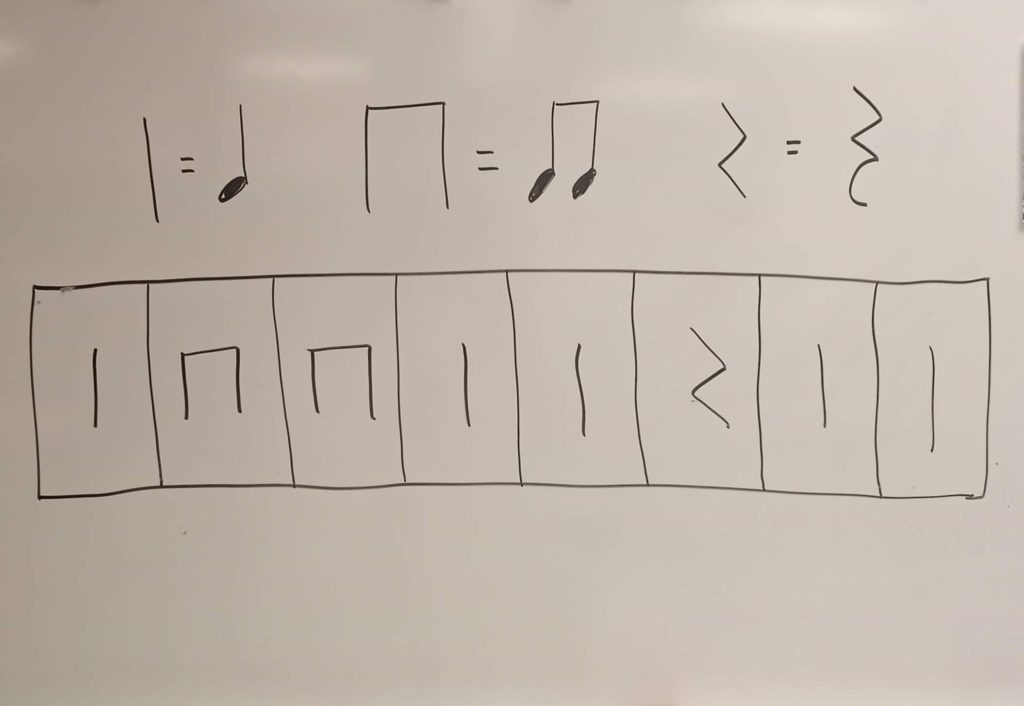
Pitch
Pitch refers to the highness or lowness of a sound. Women’s’ voices, flutes, clarinets make a higher pitched sound than men’s’ voices, trombones or baritones. You can teach the concept of pitch and learning to hear and name high or low pitches in much the same way we teach phonological awareness skills. These are all listening skills. I like to use “thumbs up” or “thumbs down”. Play a pitch on the piano or a recording, and ask if this is a high pitch, thumbs up or thumbs down.
Preschool music and movement activity No. 3
Vocal Siren exercises are used for warming up your voice from your lowest notes to your highest. Start by singing as low as you can on an “ooh” or “ah”. Let students pretend to be sirens and go as high as they can, and then as low as they can. Then make a game out of it. They must watch you for a signal to move high or move low. Your signal could be posters, or simply thumbs up and thumbs down. Allow children to walk around the room as they make their siren sounds. You could then play high and low pitches for students and let them tell if it is high or low.
Melody
The melody is the main tune of the song. It is what we sing, or what the main instruments plays in a band or orchestra. Melody is also a combination of both rhythm and pitch put together in a pleasing way.
Preschool music and movement activity No. 4
This can be done any time you are learning a new song. Have the students hum the melody or sing the pitches on “la” to learn the melody before they learn the words. Make a point of telling the children that you are listening for and learning the melody before you learn the words. You can make this a movement activity by having students move to the mood of the music as they learn the melody.
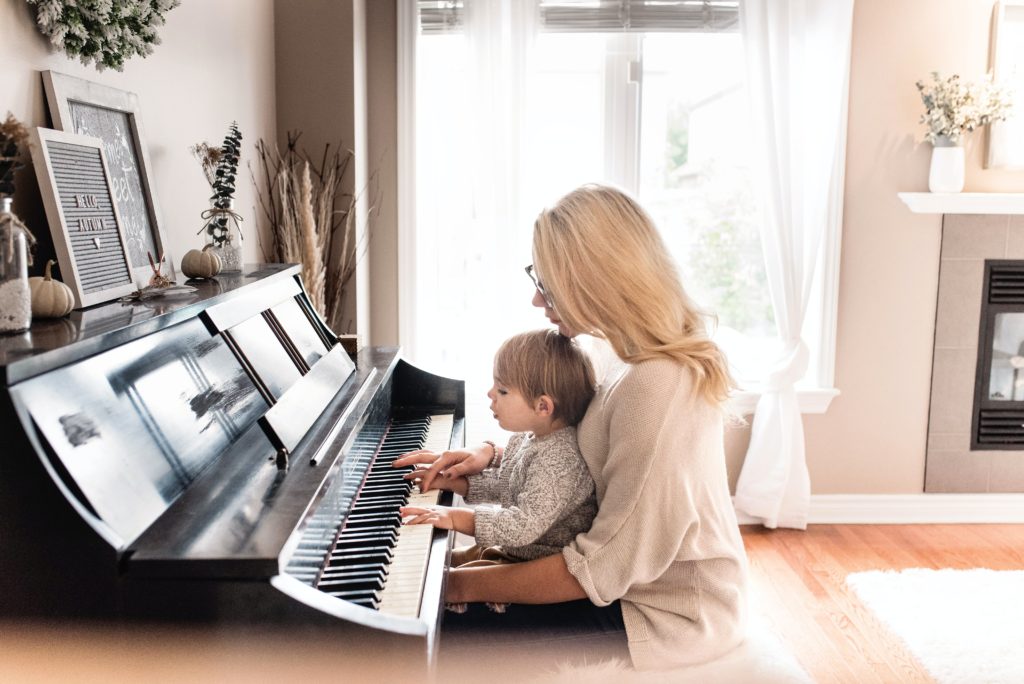
Photo by Paige Cody on Unsplash
Tempo
Tempo refers to how fast or slow the steady beat of a song goes.
Preschool music and movement activity No. 5
You can begin by teaching children the terms “Largo” and “Allegro”. I put these terms on large flash cards. When we are singing fun songs for circle time, or songs that you have chosen for a music lesson, have the students sing at whichever speed you are showing them on the flash cards. This is particularly fun if the song you have chosen has actions. They will have to do the actions really slow, or really fast. Another similar activity is to put these terms as well terms for dynamics on the sides of dice. Let children roll the dice to see how they will sing the song.
Dynamics
The dynamics of a song are the louds and softs that are used to make the song more interesting.
Preschool music and movement activity No. 6
I teach dynamics in the same way that I teach Tempo. I use flash cards or dice to show different dynamic markings. You can use the flash cards or dice during circle time singing, for music lesson plans as well as brain breaks. I like to teach Forte and Piano as well as crescendo and diminuendo. Children love to sing as loud as they can, so remember to tell them to sing “loud and lovely”, not just yelling. You may even have to demonstrate the difference. Children also find great pleasure in singing in a whisper especially when they know they will get to sing loud at any moment.
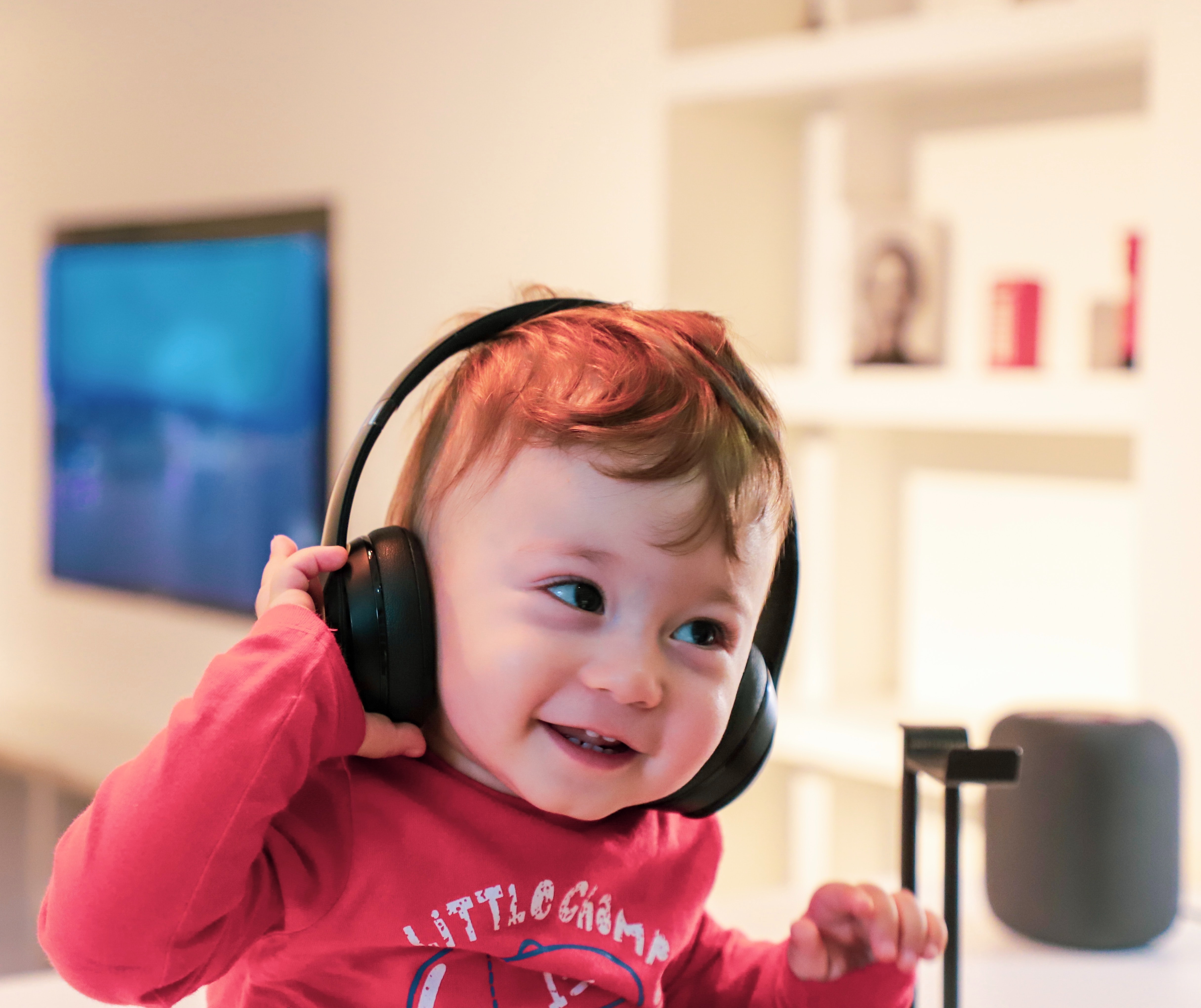
Harmony
Harmony refers to more than one note being played at a time that form pleasant chords. It is very difficult to teach Harmony to littles, since they most likely are not able to sing in harmony yet. Singing rounds is very challenging, but with practice can be accomplished with younger students. My all time favorite instrument for many things, but especially for teaching harmony are boomwhackers.
Preschool music and movement activity No. 7
YouTube has so many boomwhacker easy play alongs. My preschoolers are able to pick up on how to follow along and play only on their notes. Most of these songs have harmony either through out the songs or in certain parts of the song. It may take a little practice to get your kids to follow along and play at the correct times. Be patient, it is worth it to see students become so focused.
Timbre
Timbre, pronounced \TAM-ber\ refers to the quality of sound. Different instruments and voices have different Timbres. A bass drum has a different Timbre than a snare drum. A soprano voice has a different Timbre than a Bass voice.
Preschool music and movement activity No.8
You can use any song for this activity. You will need different rhythm instruments. Choose instruments that have as many different sound qualities as you can. You can start out with having students play to the steady bead. Next, have them play how the music makes them feel. You can introduce eighth notes, quarter notes, half notes and whole notes. Have instruments that continue to sound after they are struck, such as a triangle or cymbal, to play the whole notes. Hand drums are great for half notes. sticks, claves, wood blocks are great for quarter notes and shakers for eighth notes.
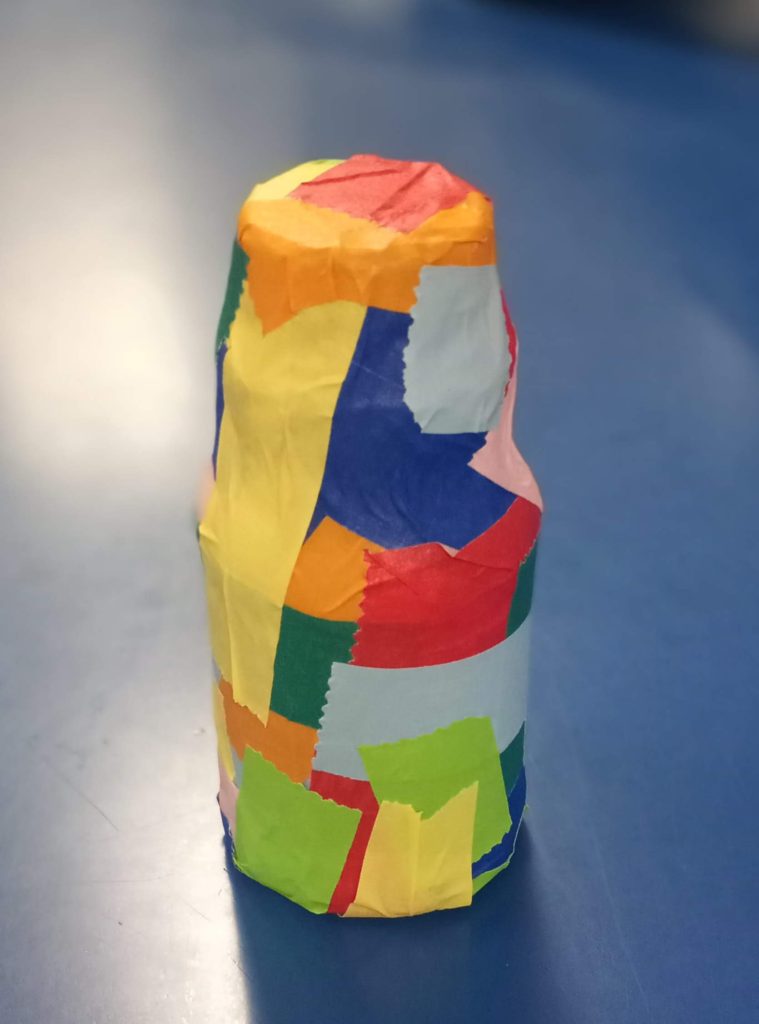
Texture
Texture is a bit complicated to explain to littles. So save this lesson until have you have talked about melody and harmony and timbre. Music with Meg on YouTube has a wonderful visual mini lesson on texture that is the best explanation for children that I have seen.
Preschool music and movement activity No. 9
After watching the video, Have children listen to different examples of monophonic, polyphonic, homophonic and Unison texture. Play the freeze game using different textures of music. When you stop, ask a student to name the texture of music.
Form
Many of the fun songs that we sing are in simple AB form, a verse and a chorus, such as BINGO.
Preschool music and movement activity No. 10
After you have explained that some songs are split into two or more parts and give examples from songs that the children know such as BINGO, provide listening example for children to dance to. Have children decide how everyone should move for the first part of the song, and then how they should move for the second part of the song. Then as children listen and dance, they will change their actions when they hear the new section of music.
Music and Movement in Preschool
If I were not a physicist, I’d probably be a musician.
I often think in music.
I live my daydreams in music.
I live my life in terms of music.
-Einstein
Using music and movement for preschool is the secret sauce to teaching anything that you want your students to remember!
